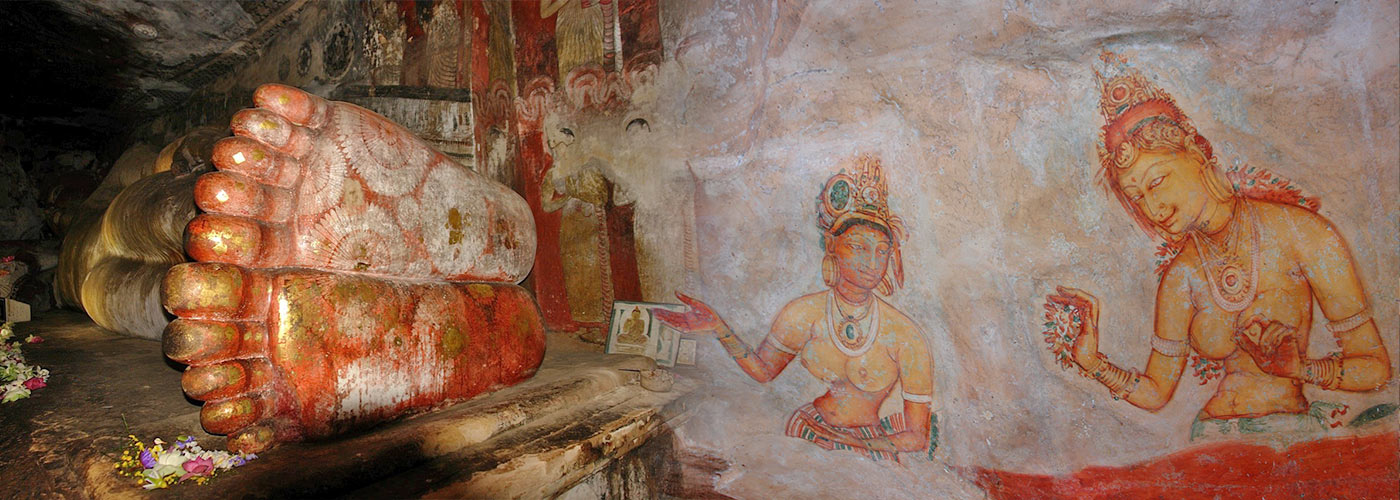
Sri Lanka by Author
11 Nights / 12 Days
The Itinerary that allows the most complete view of Sri Lanka, starting from the far northern of the country, still untouched by tourism, up to the most famous destinations of greatest cultural and naturalistic interest.
The Itinerary that allows the most complete view of Sri Lanka, starting from the far northern of the country, still untouched by tourism, up to the most famous destinations of greatest cultural and naturalistic interest.
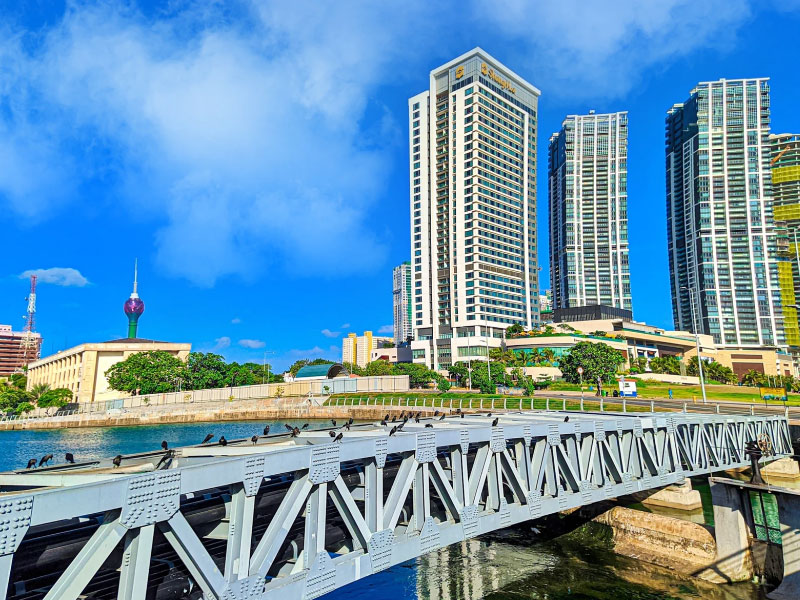
Colombo
Colombo - Sri Lanka’s Capital- a port city with a rich colonial heritage, religions and cultures offers a varying selection of experience ranging from taking a tuktuk ride, a visit to Pettah market and eating Kottu to playing a round of golf and having high tea at one of the colonial style hotels overlooking the Indian Ocean The city is a contrast itself,, fine dining options, shopping malls packed with expensive designer brands and street markets.
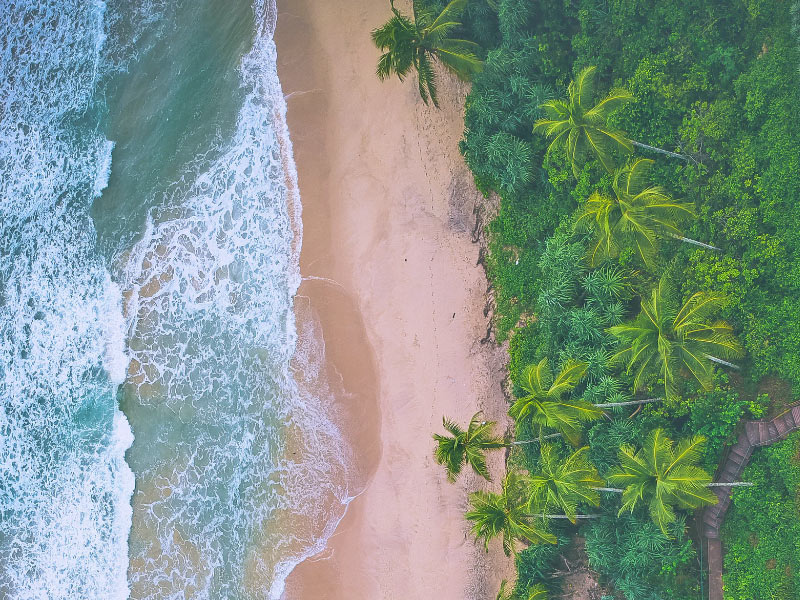
Chilaw
Chilaw is a large town in Puttalam District, North Western Province, Sri Lanka. It is governed by an urban council. The town is located, 80 km away from the capital Colombo via Negombo.
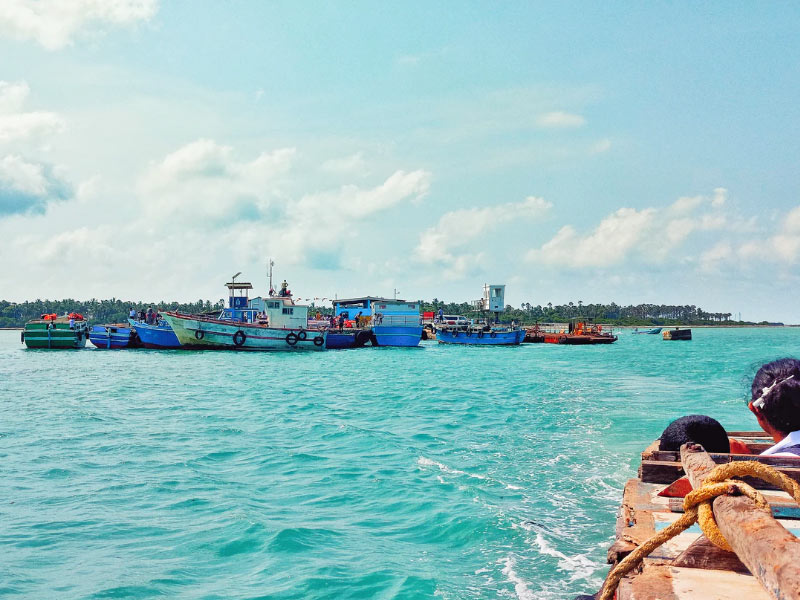
Jaffna
Jaffna - a bastion of Hindu tradition, art and creative culture, Jaffna is intriguing, unimposing, and a thoroughly rewarding place to learn about Sri Lankan Tamil culture in the middle of palm-shaded suburbs and beautiful ancient temples.
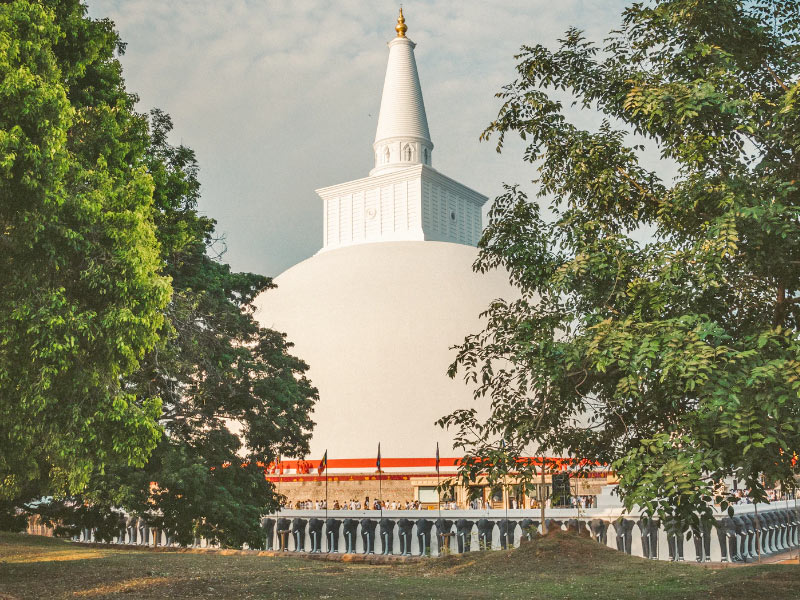
Anuradhapura
Anuradhapura - UNESCO world heritage one of South Asia’s most evocative sites- the sprawling complex contains a rich collection of archaeological and architectural wonders in the middle of the ruins, brick stupas, ancient pools and crumbling centuries old ancient temples.
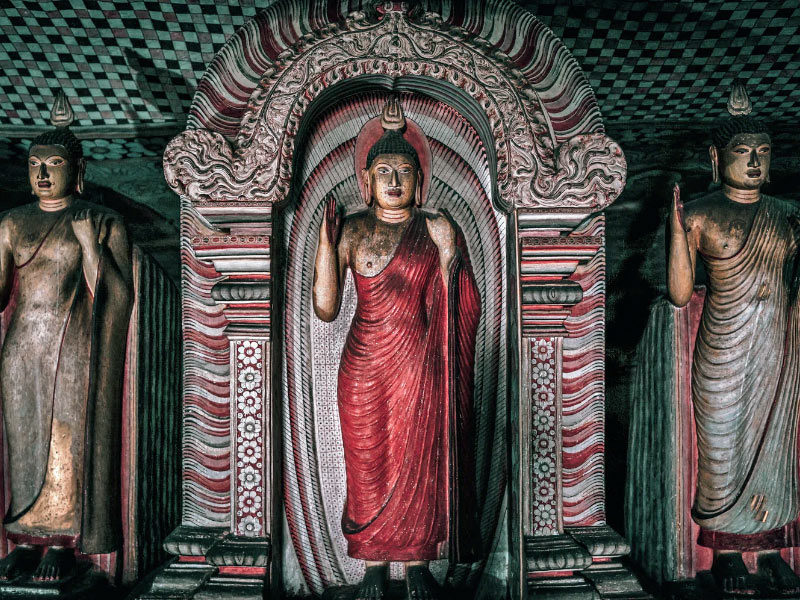
Dambulla
Dambulla - UNESCO World Heritage site, one of the largest and most outstanding Buddhist complexes in the Southern and South Eastern Asian region, showcasing innovative approaches to interior layout and decoration Temple is a living Buddhist site that is focused on a series of five cave shrines. Inhabited by forest-dwelling Buddhist monks since the 3rd century BC.
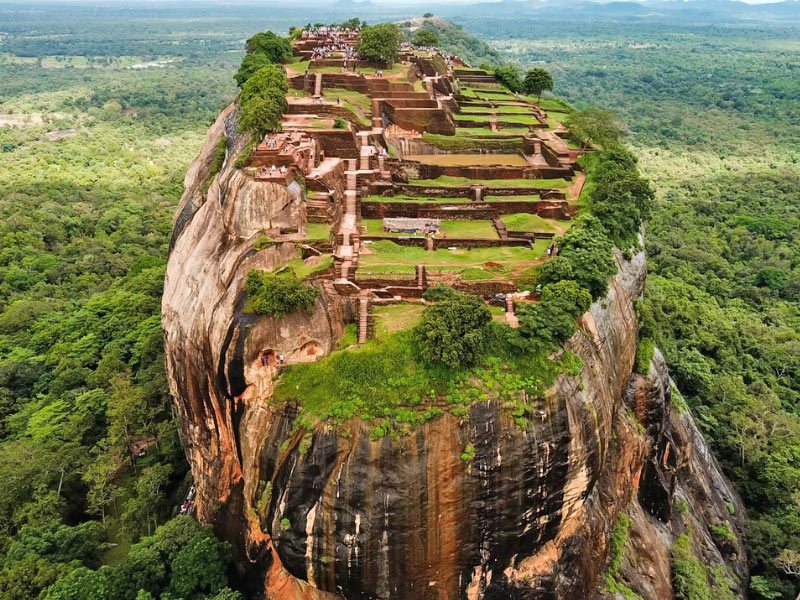
Sigiriya
Sigiriya - UNESCO world heritage site- famous for it's iconic palace ruins on top of a massive 200 meter high rock surrounded by the remains of an extensive network of gardens, remarkable frescoes and a pair of colossal lion's paws carved into the bedrock reservoirs and other structures.
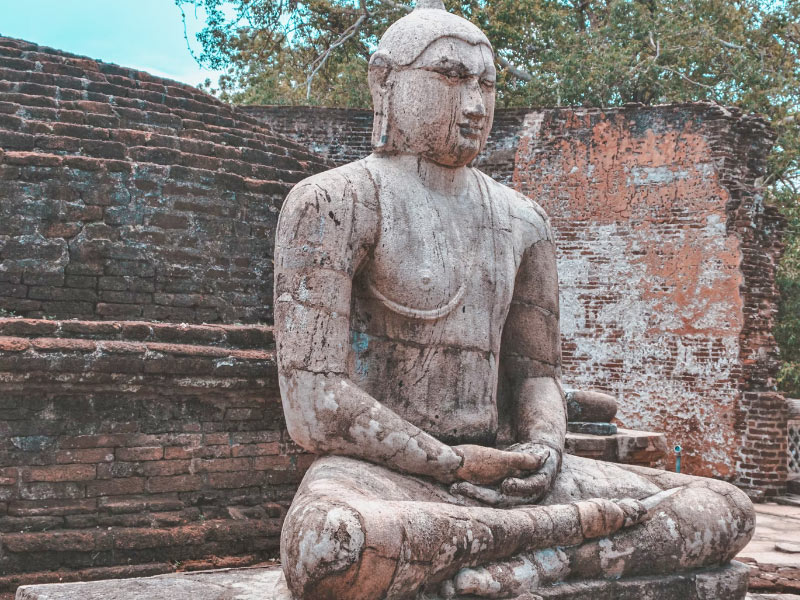
Polonnaruwa
Polonnaruwa - UNESCO world heritage site, ancient capital city full of archaeological treasures, temples, tombs, statues and stupas – in a compact core. Kings ruled the central plains of Sri Lanka from Polonnaruwa 800 years ago, when it was a thriving commercial and religious centre.
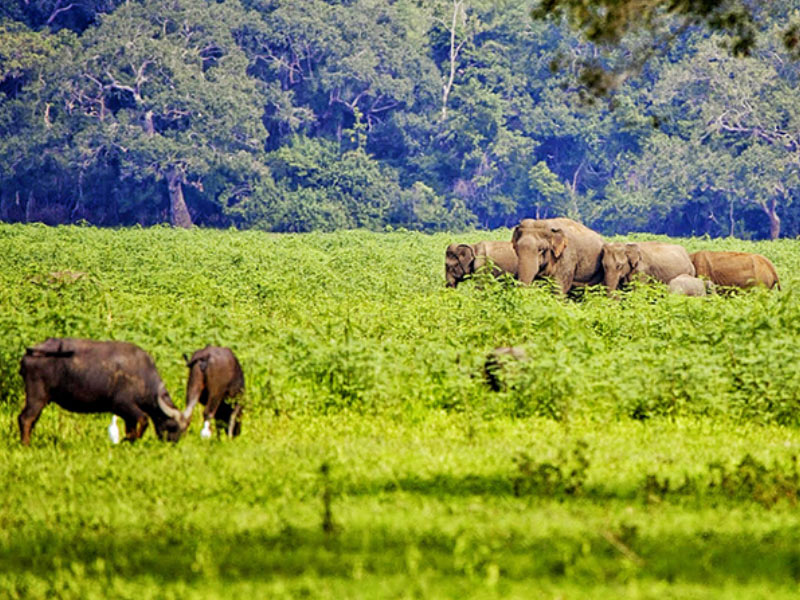
Matale
Matale- with the historical Buddhist site of Aluvihara, is a small city at the heart of the island which lies in a broad fertile valley, famous for kohila (a type of watercress) and small, mild chillies and spice plantations where vanilla, rubber, cinchona, jackfruit, cocoa and cardamom thrive.
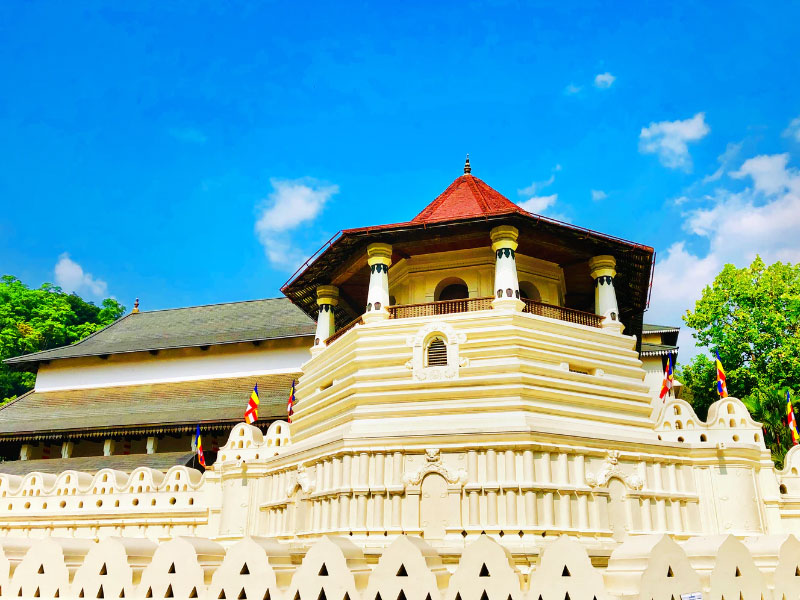
Kandy
Kandy - with its its vibrant cultural life, is a city of imposing colonial-era and Kandyan architecture, none more impressive than the Temple of the Sacred Tooth Relic, one of Buddhism's most sacred shrines and a UNESCO World Heritage Site. The city is renowned for the great Kandy Esala Perahera festival (held annually in July/August).
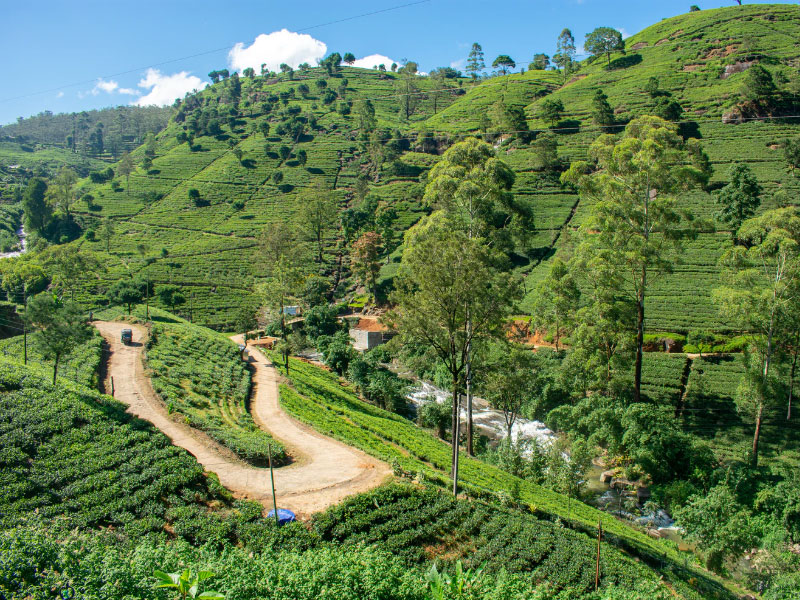
Nuwara Eliya
Nuwara Eliya - discovered by British personnel on their way to hunt elephants, Nuwara Eliya is one of the world’s largest tea producing regions and home to the country’s tallest mountain - Pidurutalagala. With its colonial-era bungalows, Tudor-style hotels, well-tended hedgerows and pretty gardens, bird watching spots, golf centres, Nuwara Eliya is one of the most fascinating places and offers a unique steam engine ride experience.
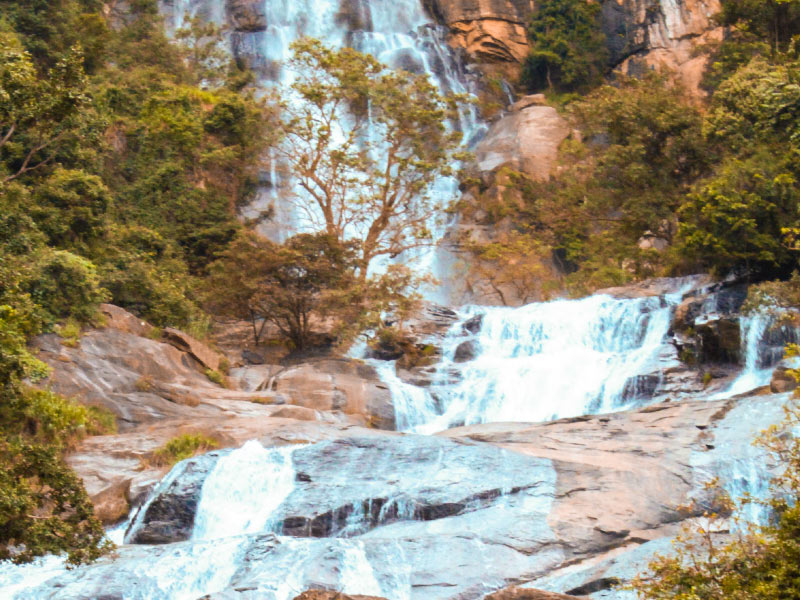
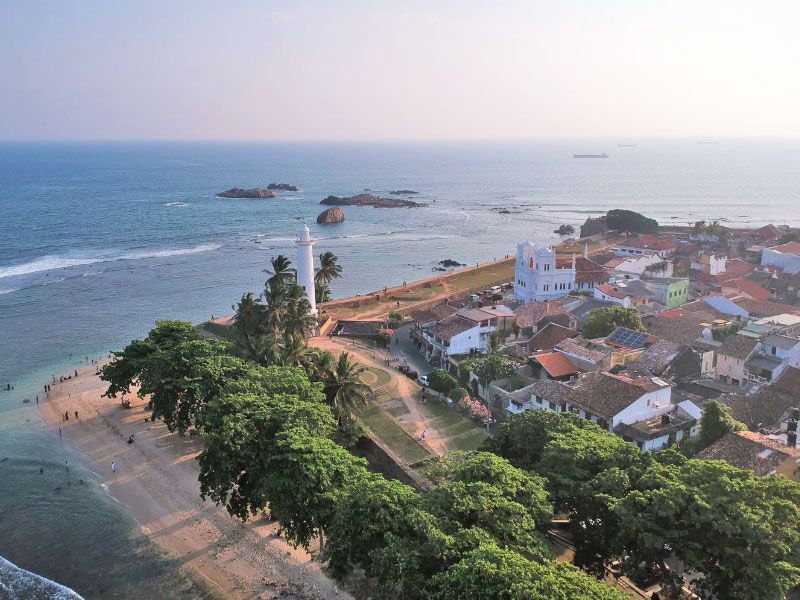
Galle
Galle is a jewel and an UNESCO World Heritage Site, this historic city is a delight to explore. An endlessly exotic old trading port blessed with imposing Dutch-colonial buildings, ancient mosques and churches, grand mansions and museums. Located approx 113 kilometers away from Colombo. The Galle Fort, also known as the Dutch Fort or the "Ramparts of Galle", is a historical, archaeological and architectural heritage monument, which even after more than 423 years maintains a polished appearance.
Spain / Colombo
Departure from Spain to Colombo: night flight.
Colombo / Chillaw
Arrival in Colombo in the morning or in the afternoon: transfer to the hotel in Chillaw (about 2 hours) and accommodation in the reserved rooms (which will still be available from 2.00 pm onwards). Rest of the day at leisure to relax by the pool or on the beach. Dinner in hotel.
Chillaw / Jaffna
Media pensión. In the morning departure for Jaffna (about 6 hours). In the afternoon visit of the city, which for centuries has been the religious and cultural center of the Hindu-Tamil part of Sri Lanka, especially during the so called kingdom of Jaffna, the Tamil dynasty which reigned for four centuries starting from the XIII century. Then conquered by the Portuguese, the Dutch and finally by the British, the Jaffna region was the protagonist of some of the saddest pages of the bloody war that ended in 2009. We will visit the Nallur Kandaswamy Kovil, one of the most important Hindu temples in Sri Lanka (dedicated to Murugan, Ganesh’s brother), the Manthri Manai (ancient palace of a prince who later fell into Portuguese hands) and the Jaffna Public Library.
Jaffna
Media pensión. Day dedicated to the exploration of the surroundings of Jaffna. Immediately outside the city you are projected into a green landscape of palm trees, colorful temples, sacred springs and sunny coasts: you will visit the ruins of Kantarodai, the Keerimalai springs, and the islands of Karaitivu and Velanai (connected to the mainland by scenic causeways, almost at sea level, overlooking the fishermen’s activities).
Jaffna / Anuradhapura
Media pensión. In the morning visit a fishing village outside the city and the picturesque and colorful Chunnakam Market, the local market of Jaffna. After lunch departure for Anuradhapura (about 4 hours): stop along the way at the Elephant Pass, the collection point for elephants from central Sri Lanka, which from here were then marched up to Kaits and embarked on the departing ships for India.
Anuradhapura / Dambulla
Media pensión. In the morning visit of Anuradhapura, the first Sinhalese capital, from the 4th century BC. up to X a.d. You will visit Sri Maha Bodhi, the sacred ficus tree descended from the original bodhi tree under which Buddha was meditating when he attained enlightenment, and Ruvanvelisaya Dagoba, the large white dagoba protected by a decorated wall with a frieze depicting hundreds of elephants; we will pass in front of two other famous reliquaries, the Thuparamaya, the first dagoba to be built on the island, and the Lankarama, to then continue with the visit of the ruins of a 9th century monastic school which preserve the Stone of the most beautiful moon in all of Sri Lanka, the imposing Abhayagiri Dagoba, about 75 meters high, the Kuttam Pokuna, two beautiful pools for ritual ablutions, and finally the Jetavanarama Dagoba, whose immense dome, at the time of the Its construction in the 3rd century made it the tallest stupa in the world. In the afternoon visit the beautiful temples excavated in the caves in Dambulla (they are located on the top of a hill with 400 steps, but you can get up to about half by car or bus: from that point the climb takes about 20 minutes ). At the end of the visit, with a short ride on an ”artisanal” catamaran on Lake Kandalama, you will reach a point where one or two elephants (belonging to a private ”elephant compound”, open exclusively for Mistral customers) go to the bath together with their ”mahouts”: it will be possible to participate in the exciting experience of bathing, playing with the elephants in the water and rewarding them at the end with delicious fruit! You will then return to the main road with another typical and original means of transport, the tractor, and from here you will return to the hotel by car/bus.
Dambulla / Sigiriya / Polonnaruwa / Dambulla
Media pensión (traditional Sinhalese lunch in a typical local village). Early in the morning (we will leave the hotel around 7 am) departure for Sigiriya: visit of the imposing fortress, declared a World Heritage Site by Unesco), built on the rock in the 5th century. and about 370 meters high. (the climb will take about a couple of hours, because there are more than a thousand steps!). On the descent you will be rewarded for the effort with delicious fresh fruit, then you will visit a local home. In the afternoon, visit of Polonnaruwa (also declared a World Heritage Site by Unesco), the second ancient capital of the Sinhalese kingdom between the 11th and 13th centuries AD. , whose temples and sculptures are among the best preserved in the country. We will visit the group of the Royal Palace of Parakramabahu, with the audience hall and the ablutions tub, the area of the Quadrilateral with the Vatadage, probably originally built to contain the relic of the sacred tooth of Buddha then transferred to Kandy , the Tuparama Gedige, a Buddhist temple with strong Hindu influences, and the Hatadage, an ancient reliquary also used to contain the Buddha’s tooth relic. Finally, visit the beautiful sculptural group of the Gal Vihara, which, with its four statues of Buddha probably marks the highest point of Sinhalese rock sculpture.
Dambulla / Matale / Kandy
Media pensión. In the morning departure for Kandy. Along the way there is a stop at a spice plantation in Matale with a demonstration of local cuisine. In the afternoon, visit the holiest city of Sri Lanka, as well as the third capital of the Sinhalese kingdom: the Temple of the Sacred Tooth Relic (Dalada Maligawa), the lake, the market square.
Kandy / Nuwara Eliya
Media pensión. Early in the morning (at 7) yoga lesson with a local teacher (lasting one hour). After breakfast, a tuk tuk ride followed by a stop in a local dance school and in an ancient and aristocratic Dutch style house, now transformed into a real house museum where it will be possible to deepen the knowledge of the extraordinary culture Sinhalese. Then continue to Nuwara Eliya, a suggestive mountain station already known at the time of the British colony (1889 meters above sea level): along the way, stop and visit a tea factory and some very fascinating natural views.
Nuwara Eliya / Wellawaya
Media pensión (lunch on the train with box lunch). In the morning, a short panoramic tour of the town, then transfer to the Nanu Oya railway station (10 km from Nuwara Eliya) and departure by train for Ella (about 3 and a half hours): the train allows you to make one of the most evocative journeys in the country, enjoying the wonderful mountain landscapes from a different perspective than the traditional one ”by road”. Upon arrival, continue to Wellawaya.
Wellawaya / Buduruwegala / Galle
Media pensión. In the morning visit the beautiful Buduruwegala complex, made up of seven statues dating back to the 10th century, carved in a single rock, in the middle of the jungle, among which that of Buddha is the highest on the island (about 15 meters) and still has traces of the original color applied to the garments. Departure then for Galle, a Portuguese, Dutch and finally English colony: upon arrival visit the charming colonial town.
Galle / Colombo
Media pensión (breakfast and dinner). Morning at leisure to stroll in the ancient and fascinating Fort district. Free lunch. In the early afternoon return to Colombo and panoramic tour of the capital: we will pass in front of the New Parliament, the Bandaranaike Memorial International convention center, the replica of the Buddha statue whose original is in Aukana and we will make a stop at the Independence Memorial Hall , the building that celebrates independence from the British rule which took place in 1948. We will continue passing in front of the Nelum Pokuna Mahinda Rajapaksa Theater, with its suggestive lotus flower shape, and in front of the Municipality of Colombo, then we will visit the Gangara maya Temple (Buddhist temple that houses a bizarre museum, made up of a very heterogeneous collection of gifts offered by the faithful) and the Seema Malaka Temple, a beautiful temple on the water built by the famous Sinhalese architect Geoffrey Bawa, located above three floating platforms connected to each other by wooden walkways. We will then pass through the Fort area with its suggestive combination of ancient buildings from the colonial era and modern structures such as the skyscrapers of the World Trade Center, the recently renovated Dutch Hospital complex, the Galle Face Green, the greenery of Colombo overlooking the sea, a favorite place for families and couples in love who frequent it especially at sunset, the Pettah bazaar and the tour will end with a stop at the historic Galle Face Hotel to savor the last cup of tea before departure. Then transfer to the hotel, accommodation in the reserved rooms, dinner and overnight stay.
Colombo / Spain
Transfer to the airport in time for the return flight to Spain. Arrival in the afternoon or the following day and end of our services.
The Journey in brief
| Duration: | 13 Days / 11 Nights |
| Hotel: | 4* (except in Anuradhapura) |
| Type: | Group Fixed Departure / Individual Private Tour |
| Departures: | Every Saturday (01st April 2023 - 23rd September 2023) |
| Guides: | Tour Escort Spanish Speaking |
| Meals: | Half board |
| The itinerary can also be created on an individual private basis with departures on free dates | |
Highlight of The Tour
- Departures always guaranteed with a minimum of 2 participants
- A unique trip to the most significant places in Sri Lanka, including the north still unknown to tourism
- “Elephant Experience” on Kandalama lake
- Private Yoga class with local master in Kandy
- Visit a dance school and a house museum in Kandy
- Scenic train ride from Nuwara Elya to Ella
- Overnight in Eco Resort in Wellawaya
- Tea at the Galle Face Hotel in Colombo
Currency adjustment blocked upon travel confirmation
Anantaya Resorts & Spa
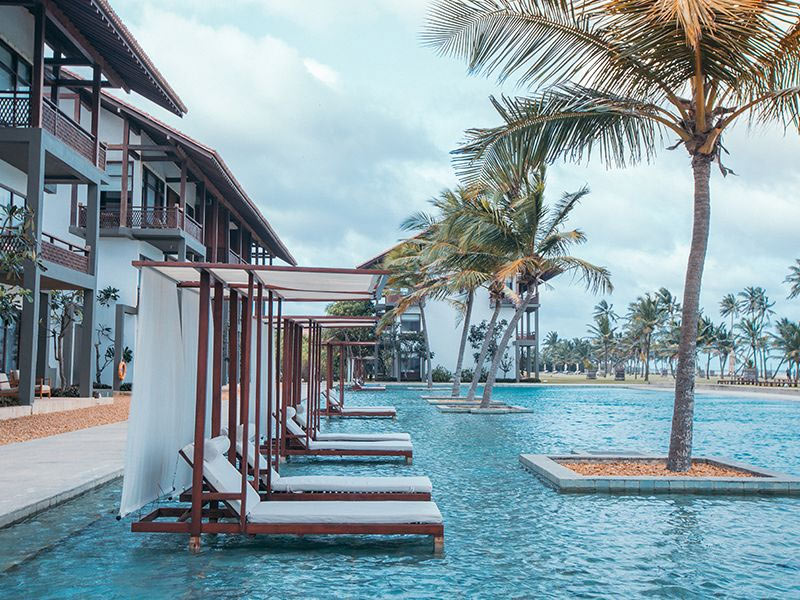
Anantaya Resorts & Spa
With over two decades of excellence, Anantaya Resorts & Spa as one of the most sought after providers of Sri Lanka beach resorts takes pride in introducing its latest additions. Expanding our horizons farther, our new range of beach resorts feature paradisiacal abodes built to please every ardent holiday maker. Choose to stay with our well equipped and ingeniously designed Anantaya Resort & Spa Chilaw or Anantaya Resort & Spa Pasikuda and be treated to great accommodation, fine dining, picturesque views & unparalleled recreation.
Jetwing Jaffna
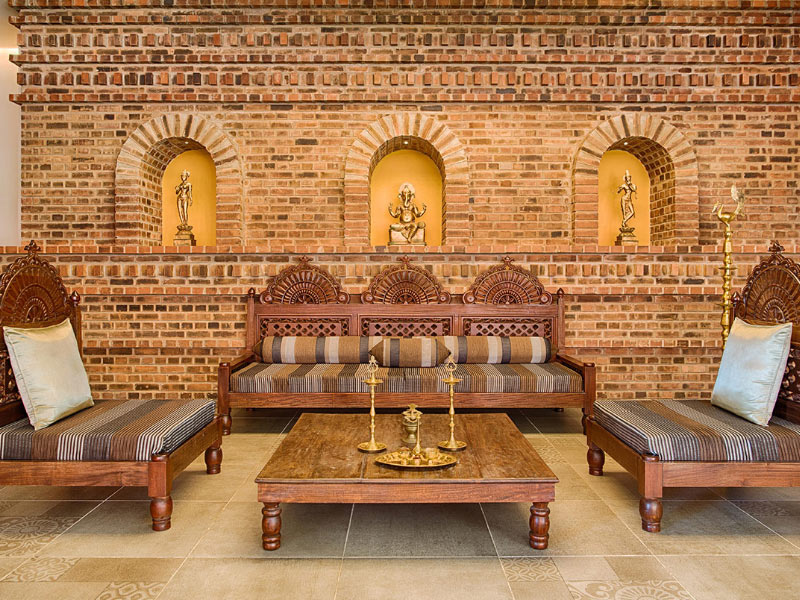
Jetwing Jaffna
An adventurous combination of historical, cultural, and geographical experiences is sprawled across the northern peninsula. Largely unexplored, the wonders of our vast region have lived through decades of strife yet remain beautifully preserved for all those who come upon them. From the balcony of your room, you will observe how lagoons separate the peninsular lands of Jaffna, while our offshore islets share the ocean with India – on a clear day, their shores may even be seen from our own. Here, our northern heritage lives on through legacies of ancient kingdoms and cultures, scattered across causeways that lead you on journeys lined with palmyrah trees scraping the northern skies.
Palm Garden Village
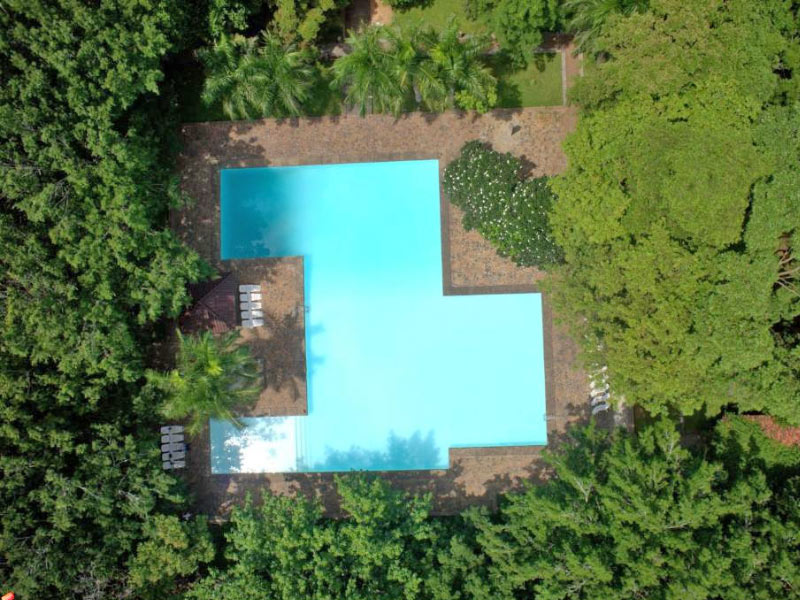
Palm Garden Village
The hotel is situated on a 50 acre plot of land that was originally used for chena cultivation. The land was devoid of trees and completely abandoned at the time of purchase on the early 1990's. Since then, a new forest has been created through hard work and patience. For the landscaping of the hotel, more then 500 big trees (about 20 feet high) were brought from the Jungle, with the permission of the Forest Department and replanted in the garden of the hotel.
Amaya Lake
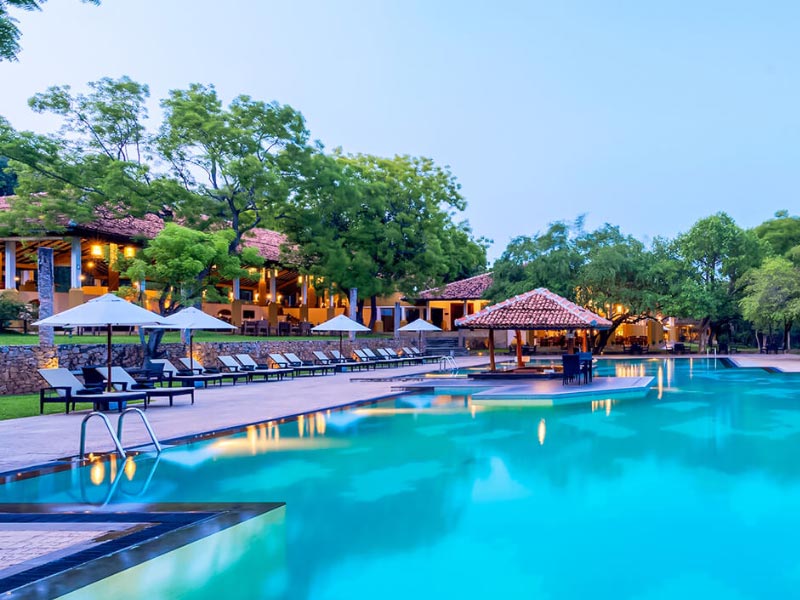
Amaya Lake
Nestled on the shores of Lake Kandalama, Amaya Lake welcomes you to a calm and peaceful stay in the heart of Sri Lanka’s Cultural Triangle. Amaya Lake is surrounded by verdant trees with the cool breeze snaking throughout the property, offering a serene getaway amidst nature unique to Dambulla hotels, Sri Lanka. With a seamless blend of untouched nature and authentic Sri Lankan culture and modern conveniences, we ensure that our guests are refreshed during their stay with us – in mind, body and soul. Experience the rustic charm of lakeside living, cycle along gravel paths through the hotel and explore Amaya Lake’s lush grounds, before feasting on an authentic Sri Lankan meal at one of the most unforgettable Sigiriya hotels.

Cinnamon Citadel
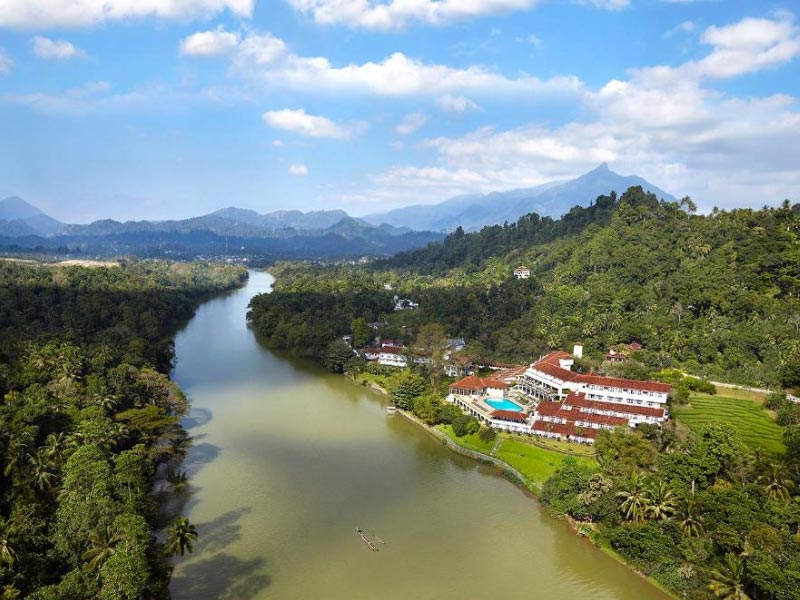
Cinnamon Citadel
Kandy is renowned to be one of the most scenic cities in Sri Lanka. Surrounded by sweeping green hills, misty mornings bordered by the longest river in the country, Cinnamon Citadel Kandy is your ideal retreat for a truly relaxed and carefree getaway. Steeped in cultural and historical significance, this resort is designed in a manner to reflect this rich history and majesty with the use of ‘heritage’ red representing royalty and white spaces symbolizing a modern, chic and sophisticated ambience.
Jetwing St. Andrews

Jetwing St. Andrews
Located in the heart of Nuwara Eliya, Jetwing St. Andrew’s is surrounded by the scenic beauty of our central highlands. Jetwing St. Andrew’s is equipped to serve you with a combination of modern and vintage amenities, including one of the oldest snooker tables in Sri Lanka. Luxury accommodation at Jetwing St. Andrew’s is a pleasure of our hospitality, and is offered to you in the form of four distinct rooms, each with their own charming characteristics. While our Superior Rooms serve as the ideal intimate getaway in our hill country, the Deluxe Rooms come with a separate timber attic that hosts two single beds for larger groups on holiday in the mountains. For an even more generous offering of space, our Suites embody the grandeur of Nuwara Eliya luxury rooms,
Jetwing Kaduruketha
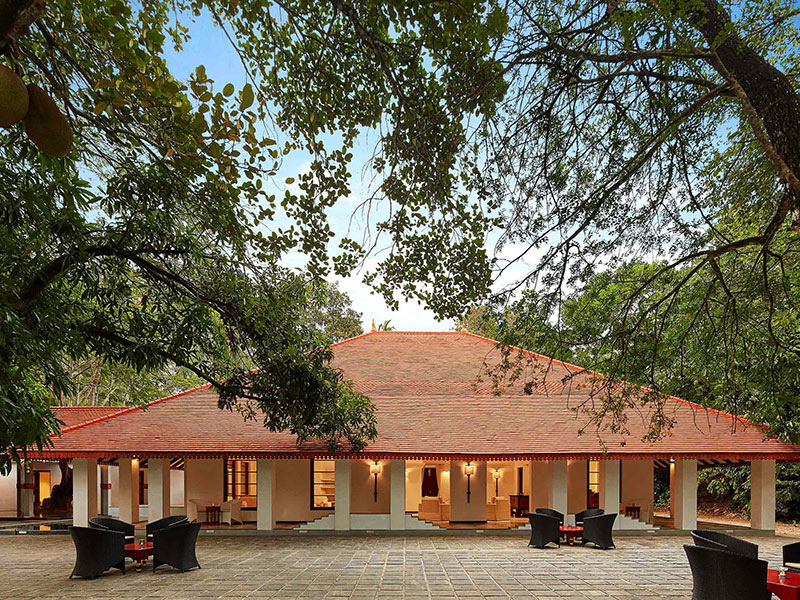
Jetwing Kaduruketha
Nestled in the midst of lush paddy fields and rolling hills, Jetwing Kaduruketha has been designed to resemble a traditional village surrounded by rural Sri Lankan landscapes. Our secluded location in Wellawaya is conveniently connected to major island hotspots, yet remains comfortably isolated in the tranquility of our home of Sri Lankan hospitality.
Amari Galle Sri Lanka
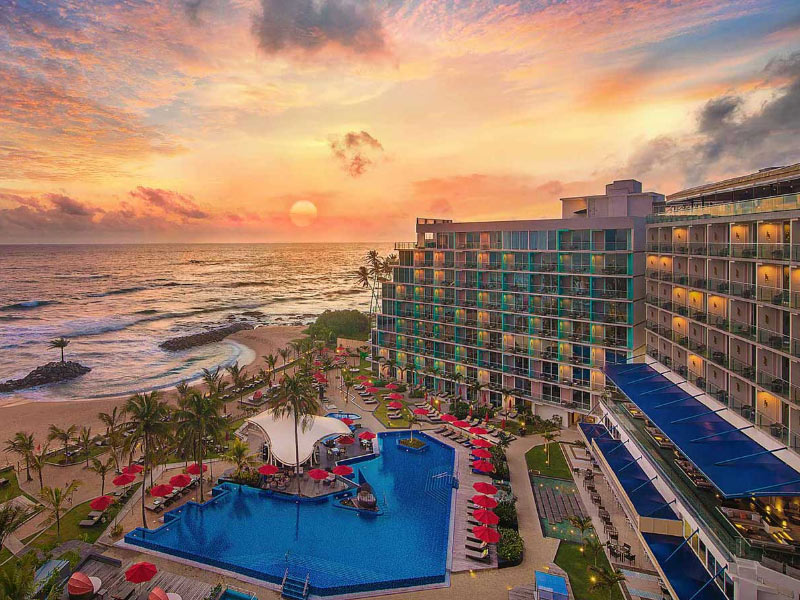
Amari Galle Sri Lanka
Welcome to Amari Galle Sri Lanka. We’re looking forward to brightening your stay when you can retreat to our beachfront resort. We’re secluded in front of a vast rainforest on Sri Lanka’s south-west coast, with every room facing the dynamic Indian Ocean. It’s your ideal vantage point to drink in the incredible Sri Lankan sunsets from your own private balcony every evening. Our spaces have been thoughtfully designed for that comforting home-from-home experience. We’ve added touches to the décor to showcase modern Sri Lankan craftsmanship at every turn – a contemporary re-imagining of the traditional Sri Lankan home. Your little ones are also going to have a blast. That’s a promise! Our professional caretakers are fully trained to take your kids on their own little adventures.
The Kingsbury Colombo

Sri Lanka
Sri Lanka has a recorded history that spans back 3000 years. Like its massive neighbour India, Sri Lanka is a diverse country, home to many religions, ethnicities and languages. It is also still blessed with a variety of wildlife that has survived alongside this human civilisation, on this small island for centuries. Today it offers tourists a diverse experience - from the modern city of Colombo with its skyscrapers to national parks teeming with elephants and religious and cultural buildings of multiple origins.
BANKING AND CURRENCY
Currency
Sri Lanka Rupee (LKR; symbol Rp) = 100 cents. Notes are in denominations of Rp2,000, 1,000, 500, 200, 100, 50, 20 and 10. Coins are in denominations of Rp10, 5, 2 and 1, and 50, 25, 10, 5, 2 and 1 cents. There are also large numbers of commemorative coins in circulation.
The import and export of local currency is limited to Rp5000. The import of notes from India and Pakistan is not allowed. Otherwise, the import of foreign currency is not restricted but all amounts over US$10,000 are subject to declaration at customs. Export of foreign currency is limited to the amount declared on import.
Foreign currency can be changed at authorised exchanges, banks and hotels.
Banking
Banking hours: Mon-Sat 0900-1300. Some city banks close at 1500, some even have night-time banking facilities.
MasterCard and Visa are widely accepted. American Express is also often accepted. The tourist board urges caution when paying by credit card due to the potential for fraud.
Major cities have ATMs, although not all will accept international cards, especially the national bank. It is advisable to try to have some cash at hand whilst travelling, particularly in rural areas.
Traveller's cheques are often not accepted. If you find somewhere that will exchange them, the rate of exchange for traveller's cheques can be better than the rate of exchange for cash but there are handling fees to consider and banks are more likely to give a favourable rate than hotels. To avoid additional exchange rate charges, travellers are advised to take traveller's cheques in US Dollars or Pounds Sterling.
TRAVEL, TRANSPORT AND GETTING AROUND
Domestic air services around Sri Lanka are limited, and most tourists travel by either road or train. If you do choose to fly, then the major domestic airport is Ratmalana at Colombo. There are reasonably regular flights to Jaffna, Palaly and Trincomalee by FitsAir (www.fitsair.com). Charter flights can be arranged by them, or by helicopter with Millennium Airlines.
With the opening of Mattala Rajapaska International Airport, domestic services are expected to begin operating between the east and south coasts in the near future.
Sri Lanka has a widespread road network, which accounts for nearly 95% of land transport across the country. Driving tends to be erratic, and most travellers either employ a locally knowledgeable driver or use public transport.
The quality of the country’s road varies considerably. The main coastal arteries are modern and well-maintained, while many of the mountain roads are poor-quality and pockmarked with holes. Road works are everywhere, demonstrating the island’s increasing prosperity and its commitment to infrastructure development.
E class roads are high-speed expressways, while A class roads represent the national highway network. B class and C class roads tend to be smaller and of varying quality.
Car hire services are available from several international agencies. To hire a car, visitors must have a valid driving licence and be 18 or over. In order to avoid bureaucratic formalities in Sri Lanka, an International Driving Permit should be obtained before departure. If not, a temporary licence to drive is obtainable on presentation of a valid national driving licence. Air-conditioned minibuses are also available. Motorised rickshaws are also readily available for hire in towns and villages. Chauffeur-driven cars are not too expensive and are recommended.
Taxis in Sri Lanka have yellow tops and red and white plates. In Colombo, taxis are metered but it is advisable to agree a rate before setting off. Drivers expect a 10% tip. A cheaper and more authentic option is to flag down a tuk-tuk - these open rickshaws are available for hire in abundance across the country.
Cycling in the cities is inadvisable, but in rural areas bikes are becoming increasingly common. There are four National Cycle Trails. Most bike hire agencies are concentrated in Colombo and Negombo.
The cheapest and most enjoyable way to get around Sri Lanka is by bus. Most vehicles are ancient, atmospheric and packed with chattering locals, and major routes include Colombo to Kandy, Colombo to Matara and Colombo to Jaffna. Timetables can be found on the website of the National Transport Commission (www.ntc.gov.lk).
The Central Transport Board provides intensive urban bus operations in Colombo, where there are also private buses and minibuses. Fares are generally collected by conductors. Services are often crowded.
Trains connect Colombo with all tourist towns, but first-class carriages, air conditioning and dining cars are available on only a few. Passengers can buy tickets online from Sri Lanka Railways (www.railway.gov.lk). New fast services operate on the principal routes, including an intercity express service between Colombo and Kandy, otherwise journeys are fairly leisurely.First-class carriages almost always book up in advance, so it’s best to secure your ticket early.
There is no official river transport network, but several tourism operators offer river cruises on the Bentota and Polwatta rivers.
FOOD, DRINK AND CUISINE ADVICE
All water should be regarded as being potentially contaminated. Water used for drinking, brushing teeth or making ice should have first been boiled or otherwise sterilised, whilst bottled water and a variety of mineral waters are available at most hotels. Unpasteurised milk should be boiled, and if possible powdered or tinned milk is advised; these are generally available in Sri Lanka. Pasteurised and sterilised milk is available in some hotels and shops. Avoid dairy products made using unboiled milk. Beware of eating salads - vegetables should be cooked and fruit peeled, and all should be washed in sterilised water. Street food in Sri Lanka is ubiquitous but use your judgement wisely and only eat well-cooked meat and fish, that have not been left sitting out.
Whether it’s a curry spread served in a private house or a succulent fish dish dressed to perfection in a restaurant, Sri Lankan cuisine is a true treat for the taste buds. Rice, spices and fruit are at the centre of most meals - expect a typical non-Westernised menu to feature staples such as mango lassi, Ceylon tea, curries and ‘roti’ flatbread. Prices are incredibly low outside the tourist hotspots, and it’s quite possible to eat like a king for less than £5 per day.
While Sri Lankan cookery is increasingly famous for its fine flavour combinations, most visitors will draw the line at being served curry at breakfast. Bigger hotels generally offer British-style spreads, but at smaller guesthouses you may need to ask for something a little milder. Expect a greater diversity of cuisine in large towns and cities such as Colombo and Negombo, where Chinese, Continental, Indian and Japanese menus are common.
In most Sri Lankan towns, you’ll find pavement stalls and corner shops selling street food specialities. No trip to the country is complete without a scrumptious snack bought from a street vendor but avoid unpeeled fruit and salads, which can trigger violent reactions in the uninitiated.
Alcohol cannot be sold on poya holidays (which occur each lunar month on the day of the full moon).
Most hotels include a 10% service charge. Extra tipping is optional.
CLIMATE AND WEATHER
Sri Lanka climate is tropical and consists of distinct wet and dry seasons. The Yala monsoon brings abundant rainfall to the country’s western and southern regions from May to September; the area experiences its dry season during December through March. Altogether, the southwest receives around 4000mm of rainfall each year. The Maha monsoon affects northern and eastern Sri Lanka weather and often lasts from October to January, with the dry season usually lasting from May to September. This region receives approximately 1000mm of precipitation annually, significantly less than the other half of the country. There is also an inter-monsoonal period in October and November during which rain and thunderstorms occur frequently across the island.
Generally speaking, upland areas of Sri Lanka are cooler and more temperate, with a yearly average around 16-20ºC (60-68ºF), and coastal areas are warmer with average temperatures around 27ºC (80ºF). The March-June season experiences slightly higher temperatures (up to 33ºC / 92ºF), while the temperatures in November-January are a few degrees lower (around 24ºC / 75ºF at the coast). Sri Lanka weather along the shores is made more comfortable by cooling sea breezes. The surrounding sea remains rather constant at roughly 27ºC (80ºF) year-round. Humidity is typically rather high in Sri Lanka, averaging out at around 80% year-round.
As the nation is located in the tropics, Sri Lanka weather can be severely affected by an El Niño. Though this irregular climate change only occurs around every three to seven years, the area’s weather can be altered for an extended time in effect. In the presence of a strong El Niño, expect a chance of drought conditions during the March-August months and possible flooding September-November. Floods regularly hit Sri Lanka, particularly in the southwestern region, so it may be wise to avoid the area during the wet season.
Sri Lanka climate can be at its most enjoyable in the drier seasons; the best time to travel to the west, south and upland areas of the island is during December to March, while the recommended travel season for the east coast region is April to September.
The most popular season for tourism is between December and March, when the country attracts Europeans fleeing the Northern Hemisphere’s winter weather. Christmas and the New Year are particularly popular for a Sri Lankan holiday, while July and August represent festival season on the island – if travelling during either time it is recommended to book well in advance to guarantee accommodation.
The island is certainly a year-round destination as there is usually one region of the country experiencing good weather, while others are hit by poorer conditions. The diverse topography of Sri Lanka allows for balmy beach holidays on the east coast from April to November, while the west is ideal for hitting the beach from December to March. However, be aware that Sri Lanka weather can be unpredictable during any season.
CLOTHING AND DRESS RECOMMENDATIONS
The weather in Sri Lanka can be unpredictable during any season so depending on where in the country you’re going, it’s best to take layers. The central highlands can be significantly cooler throughout the year, so you’ll need warmer clothes here. Lightweight rainwear is also recommended any time of year.
ELECTRICITY AND PLUG STANDARDS
For the most part, electrical sockets (outlets) in Sri Lanka are one of two types: the "Type D" Indian 5 amp BS-546 or the European CEE 7/16 Europlug. The Indian socket is actually an old British standard. The "Type D" Indian plug and socket is not to be confused with the "Type M" South African plug and socket. In pictures, they look very similar, but the South African type is much larger than the Indian type, and they are physically incompatible. If your appliance's plug doesn't match the shape of these sockets, you will need a travel plug adapter in order to plug in. Travel plug adapters simply change the shape of your appliance's plug to match whatever type of socket you need to plug into. If it's crucial to be able to plug in no matter what, bring an adapter for both types.
Electrical sockets (outlets) in Sri Lanka usually supply electricity at between 220 and 240 volts AC. If you're plugging in an appliance that was built for 220-240 volt electrical input, or an appliance that is compatible with multiple voltages, then an adapter is all you need.
But travel plug adapters do not change the voltage, so the electricity coming through the adapter will still be the same 220-240 volts the socket is supplying. North American sockets supply electricity at between 110 and 120 volts, far lower than in most of the rest of the world. Consequently, North American appliances are generally built for 110-120 volts.
